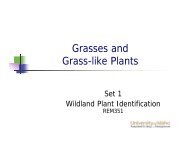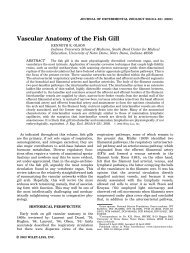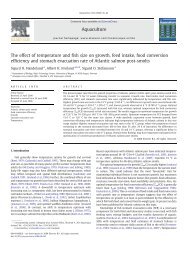Sage-grouse Habitat in Idaho - College of Natural Resources ...
Sage-grouse Habitat in Idaho - College of Natural Resources ...
Sage-grouse Habitat in Idaho - College of Natural Resources ...
Create successful ePaper yourself
Turn your PDF publications into a flip-book with our unique Google optimized e-Paper software.
Late Brood-Rear<strong>in</strong>g (July-Sept.)<br />
As the summer months get hotter the grasses and<br />
forbs on rangelands start to dry out. Dur<strong>in</strong>g this time<br />
the hen and brood will move out <strong>of</strong> their nest<strong>in</strong>g habitat<br />
to follow the availability <strong>of</strong> forbs and <strong>in</strong>sects. They will<br />
either move to areas higher <strong>in</strong> elevation where conditions<br />
are more moist or to areas where water collects. They<br />
can frequently be seen<br />
<strong>Habitat</strong><br />
Feature<br />
<strong>Sage</strong>brush<br />
canopy cover<br />
<strong>Sage</strong>brush<br />
height<br />
Proximity <strong>of</strong><br />
sagebrush<br />
cover<br />
Perennial<br />
grass and forb<br />
canopy cover<br />
Riparian and<br />
wet meadow<br />
plant<br />
community<br />
Riparian and<br />
wet meadow<br />
stability<br />
Forb<br />
availability <strong>in</strong><br />
uplands and<br />
wetland areas<br />
<strong>Habitat</strong><br />
Use<br />
Cover<br />
Cover<br />
Cover<br />
Cover & Food<br />
Food<br />
Cover<br />
and Food<br />
Food<br />
Productive <strong>Habitat</strong><br />
10% - 25%<br />
15-30 <strong>in</strong>ches<br />
<strong>Sage</strong>brush cover<br />
is adjacent (<<br />
100 yards) to<br />
brood-rear<strong>in</strong>g<br />
area<br />
≥ 15%<br />
Wetland plant<br />
species dom<strong>in</strong>ate<br />
wet meadow or<br />
riparian area<br />
Some bare ground<br />
may be evident<br />
but<br />
vegatative cover<br />
dom<strong>in</strong>ates the site<br />
Succulent forbs<br />
are readily<br />
available <strong>in</strong> terms<br />
<strong>of</strong> distribution<br />
and plant<br />
structure<br />
<strong>in</strong> agricultural fields,<br />
wet meadows, and<br />
riparian areas adjacent<br />
to sagebrush cover.<br />
Table 2 details the<br />
habitat characteristics<br />
dur<strong>in</strong>g this period.<br />
Some sage-<strong>grouse</strong><br />
have been observed<br />
travel<strong>in</strong>g as far as 50<br />
miles to reach their<br />
summer ranges.<br />
Table 2: Late broodrear<strong>in</strong>g<br />
habitat<br />
characteristcis<br />
(Source: Connelly et al. 2000 & Sather-<br />
Blaire et al. 2000)<br />
<strong>Sage</strong>-Grouse <strong>Habitat</strong> <strong>in</strong> <strong>Idaho</strong><br />
Late Brood-Rear<strong>in</strong>g<br />
33





